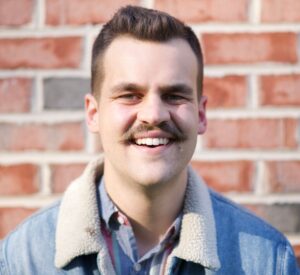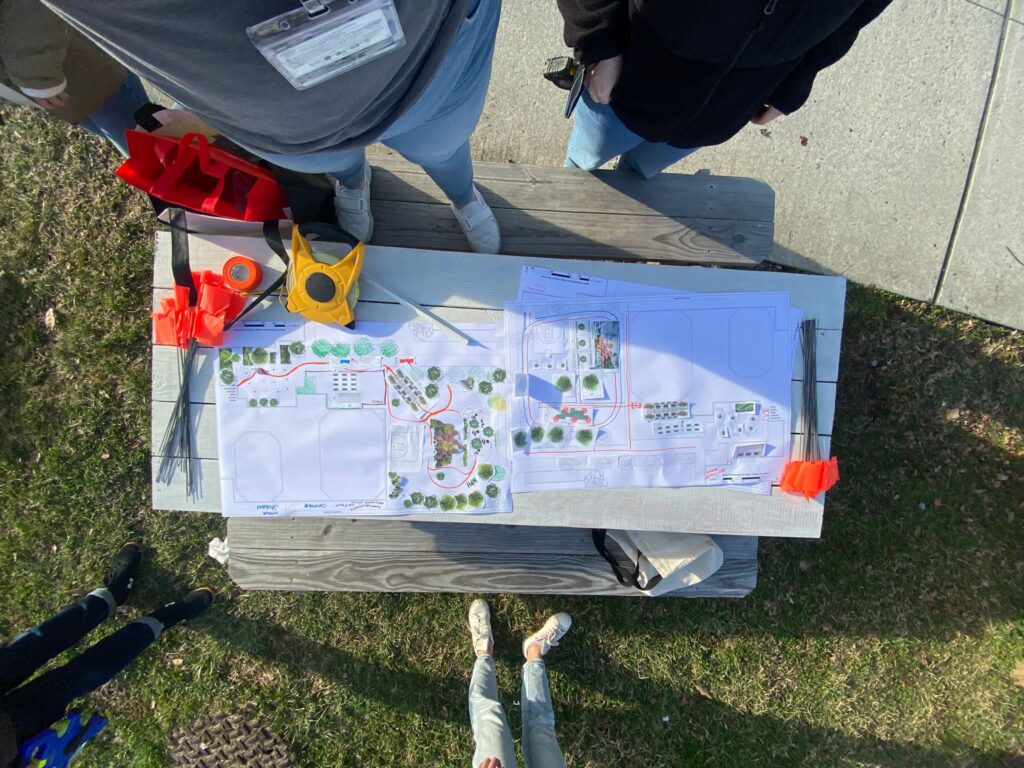Idea: Democratically co-designing a school mural that strengthens youth social infrastructure.
Primary artistic medium: multidisciplinary
Biography
Growing up, I mowed lawns every summer, from middle school on. Exploring the neighborhood in this way, I realize now, set me up to appreciate the importance of stewarding open green space and led me to engage with my neighbors and no doubt sparked my interest in community-based landscape design. I pursued a BFA from the Philadelphia Academy of Fine Arts,where I studied landscape painting and figurative sculpture in an effort to explore how humans and their bodies interact with the landscape around them. Later in my undergraduate career, I discovered that my passion for landscape design and art was a potential career path. This led me to pursue a degree in landscape architecture, where I immersed myself in the art of community-based design of natural systems.
After many years of work in landscape architecture, I have found some paradoxes inherent in the profession. Not only does it take years of education before most young people discover even the existence of the field, but the inherent time involved in working with natural systems can be overwhelming. Additionally, designing a landscape is only the beginning; although the act of growing and stewarding the landscape is critical, it is often overlooked by much of the design field. While I continue to paint and design landscapes, my overarching goal has evolved toward creating opportunities for communities to engage with their local landscape through design in an equitable, sustainable fashion.
Through my current work at PennPraxis, a community outreach arm of the University of Pennsylvania design school, I strive to address the issues inherent to the landscape architecture profession by creating programming for youth. The curriculum I have co-designed introduces students to the design profession, careers related to it, and their local landscape. Much of this work is meant to rethink how we view schools; not as places for kids to go for a few hours, but as social infrastructure and a hub for community resources. Reintroducing creative outlets and technical skills to secondary education is needed in order to combat the youth mental health crisis and to teach the next generation how to be resilient in the face of unprecedented change and uncertainty. By co-designing and co-building healthy comfortable spaces around the city where youth can meet each other, learn useful skills, and have space to heal and grow, I hope to play a part in co-creating healthy and accessible places for students to thrive.
Project Description
Engagement today means slowing down and listening, giving space to freely create and iterate good ideas to make them even better. A new school-wide interdisciplinary design studio at the Weitzman School of Design aims to reframe public schools as equity infrastructure by engaging with public schools in West Philadelphia through co-designing and co-building social “chill spots” with gardens and outdoor classrooms. The pandemic emphasized the need for such spaces in communities, especially as we face a growing youth mental health crisis in this country.
While the space is being collectively built this summer (July 2022) at West Philadelphia High School, the walls are still bare and devoid of an identity. Students in the architecture Career Technical Education (CTE) program, with which the studio is collaborating, have expressed great interest in creating colorful walls and murals that commemorate inspirational figures and their school pride. My goal is to work iteratively along with teams of students in the classes and afterschool program to create mural designs, at first hand drawn, then digitized, and presented to the school faculty. The faculty and staff will approve three to be voted on by the school body. The design school could use digital fabrication to print colored resin scale models of the murals to allow for easy communication of the designs.
The final three designs and models are then voted on by the school community. Once the top mural designs are chosen, the painting process will be designed such that the final mural could then be painted by the students in an after-school program or along with the existing CTE design class. This creative process is designed for engagement. It enables students to have a sense of ownership of their school space and mural designs, thereby creating a space where students can rest and spend time with their friends in a safe and comfortable community environment.
A large community event will be held to celebrate the completed murals as well as to inaugurate the site’s space. Students have shown interest in fashion design and entrepreneurship as well. This celebration could be supported with branding and making screen printed merchandise designed by the students available, adding to the sense of pride for the students’ creative space. This event, full of students, faculty, staff, families, and neighbors, presents the school and the creative work as a collective community asset within the neighborhood. This iterative and democratic process will allow for broad engagement with students.
As communities try to heal from the harm done from the past two years and even generations of trauma before, it is vital that the people creating spaces create not just for but with the people that need it the most. This project has the intention to engage with a young community of students at the speed of trust. Slowly building meaningful relationships and designs that support a communal sense of pride.







